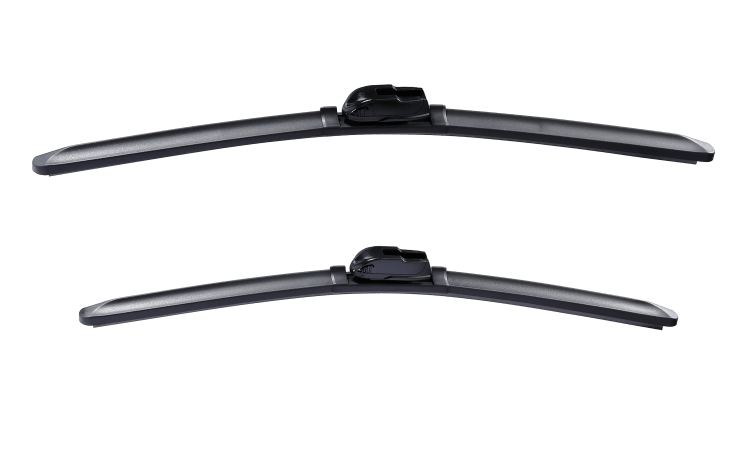Enhancing Driving Safety: The Crucial Role of Quality Wiper Blades
When discussing vehicle safety, most drivers immediately think of brakes, tires, or airbags. However, one of the most overlooked components in any vehicle is the wiper blades. These simple yet vital tools play a critical role in ensuring visibility, especially during adverse weather conditions. Whether it’s rain, sleet, snow, or even dusty environments, properly functioning wiper blades can make the difference between a safe journey and a potentially dangerous one.
Why Wiper Blades Matter
Visibility is one of the most essential aspects of safe driving. A clear windshield ensures that the driver can see the road, traffic signals, pedestrians, and other vehicles without obstruction. Wiper blades are responsible for clearing rain, snow, and debris from the windshield, maintaining this vital visibility.
Over time, wiper blades wear out due to exposure to sunlight, temperature changes, and the mechanical motion they perform. As they degrade, they begin to streak, squeak, or skip, reducing their effectiveness and potentially leading to dangerous driving conditions. Therefore, regular maintenance and timely replacement of wiper blades are crucial.
Types of Wiper Blades
There are various types of wiper blades available on the market today, and each serves a specific purpose based on vehicle model, climate, and driver preference:
-
Conventional Frame-Style Blades
These are the most common type of wiper blades, consisting of a metal framework that supports a rubber squeegee. They are cost-effective and easy to replace. -
Beam Blades
Designed with a single piece of rubber or silicone, beam wiper blades offer better aerodynamics and are more effective in severe weather conditions. -
Hybrid Blades
A combination of frame and beam blades, hybrid wiper blades provide durability and improved performance while maintaining an aesthetic appeal.
Choosing the right type of wiper blades for your car can significantly enhance your visibility and overall driving safety.
Signs You Need New Wiper Blades
Knowing when to replace your wiper blades can prevent unpleasant surprises during a storm or while driving in dusty conditions. Here are some signs that indicate it’s time for a replacement:
-
Streaking or Smearing: If your wiper blades leave behind streaks or smudges, they are likely worn or damaged.
-
Chattering Noise: A chattering or squeaking sound as the wiper blades move across the windshield usually means they’re not making even contact with the glass.
-
Bent Frames or Cracks: Physical damage to the wiper blades, including bent arms or cracked rubber, can hinder performance.
-
Reduced Flexibility: Over time, the rubber on wiper blades can become rigid, especially in colder climates, reducing their effectiveness.
Experts recommend checking your wiper blades every six months and replacing them at least once a year.
The Role of Quality in Wiper Blades
Not all wiper blades are created equal. High-quality wiper blades provide better durability, quieter operation, and superior wiping performance. Investing in premium wiper blades can mean the difference between frustration and confidence during a heavy downpour.
This is where trusted brands like UNIWIPER come into play. Known for their innovative design and high-performance standards, UNIWIPER products have become a preferred choice for drivers who value quality and reliability. Choosing a reputable brand ensures you’re not compromising on safety or performance.
Installation and Maintenance Tips
Proper installation and care of wiper blades can extend their lifespan and effectiveness. Here are some practical tips:
-
Clean Your Windshield Regularly: Dirt and grime can accumulate on the windshield, increasing friction and wear on your wiper blades.
-
Inspect Blades Often: Look for signs of wear and tear. Even if they appear fine, regular checks help catch problems early.
-
Replace in Pairs: Always replace both front wiper blades together. Uneven wear can lead to inconsistent performance.
-
Follow Manufacturer Guidelines: Use the correct size and type of wiper blades as specified by your vehicle manufacturer.
Weather and Wiper Blades
Different weather conditions affect wiper blades differently:
-
Rain: The most common use for wiper blades, frequent exposure to water can wear down the rubber faster if the quality is poor.
-
Snow and Ice: Icy buildup can tear or bend wiper blades, making winter-ready blades a necessity in colder climates.
-
Sunlight and Heat: UV rays can dry out and crack the rubber, reducing flexibility and lifespan.
Depending on your local climate, you may benefit from specialty wiper blades designed to withstand specific environmental conditions.
Conclusion
While they may seem like a minor detail, wiper blades are an essential safety feature of your vehicle. Ignoring their maintenance or choosing substandard replacements can put you at serious risk, especially in challenging weather conditions. Investing in high-quality wiper blades, and maintaining them properly, is a small yet crucial step toward safer driving.
By recognizing the importance of clear visibility and the role wiper blades play, drivers can make smarter, safer choices on the road. Whether you’re upgrading to a new set or simply checking their condition, don’t underestimate the value these simple components provide in your daily commute.
- Share

YOU MIGHT ALSO ENJOY
Mastering the Road: How DMV Virginia One on One Class and adult waiver dmv Can Help You Succeed
Stephen Romero - August 26, 2025
Discover the Allure of Exotic Escapes: The Rise of Sex Resort and Erotic Resorts
Stephen Romero - August 25, 2025
What Is Included In Aviation Maintenance Services?
Stephen Romero - August 25, 2025
search
FAST ACCESS
- art&gallery (4)
- Automotive (19)
- beauty (4)
- blog (127)
- Business (431)
- cleening (8)
- clinic (1)
- courier services (3)
- dentel care (1)
- Driving school (2)
- electronics (1)
- events (1)
- forests (8)
- gameing (5)
- Health (24)
- Health & Fitness (217)
- Home & Garden (15)
- Landscaping (1)
- Law (16)
- Lifestyle (8)
- machinery (3)
- Real Estate (8)
- Share Market (15)
- Shopping (5)
- Technology (28)
- tool (1)
- toys (2)
- Travel (22)
- Wedding & Events (312)
must read
Mastering the Road: How DMV Virginia One on One Class and adult waiver dmv Can Help You Succeed
Stephen Romero - August 26, 2025
Discover the Allure of Exotic Escapes: The Rise of Sex Resort and Erotic Resorts
Stephen Romero - August 25, 2025
Blog: Colorado’s Romantic Hideaways & High-End Architectural Escapes
Stephen Romero - August 23, 2025
Top LED Display Manufacturers and Suppliers: How to Choose the Best
Stephen Romero - August 22, 2025
recent post
ARCHIVES
- August 2025 (157)
- July 2025 (150)
- June 2025 (173)
- May 2025 (99)
- April 2025 (1)
- March 2025 (8)
- February 2025 (9)
- January 2025 (8)
- December 2024 (25)
- November 2024 (40)
- October 2024 (11)
- September 2024 (1)
- July 2024 (10)
- June 2024 (11)
- May 2024 (31)
- April 2024 (15)
- March 2024 (19)
- February 2024 (6)
- January 2024 (7)
- December 2023 (11)
- November 2023 (1)
- July 2023 (13)
- June 2023 (21)
- May 2023 (27)
- April 2023 (23)
- March 2023 (16)
- February 2023 (31)
- January 2023 (27)
- December 2022 (11)
- November 2022 (12)
- October 2022 (11)
- September 2022 (11)
- August 2022 (14)
- July 2022 (13)
- June 2022 (19)
- May 2022 (17)
- April 2022 (10)
- March 2022 (12)
- February 2022 (8)
- January 2022 (9)
- December 2021 (19)
- November 2021 (4)
- October 2021 (6)
- September 2021 (4)
- August 2021 (4)
- July 2021 (10)
- June 2021 (6)
- May 2021 (2)
- April 2021 (2)
- March 2021 (45)
- August 2020 (31)
- July 2020 (30)
- June 2020 (29)










